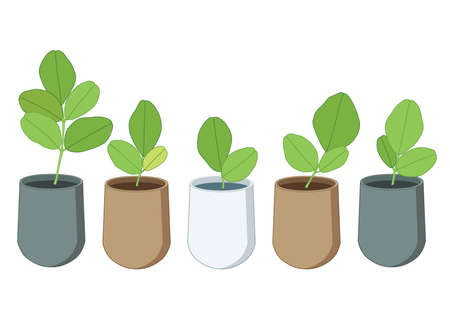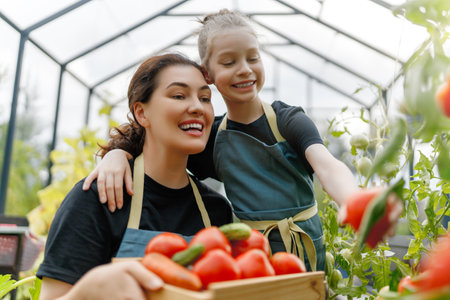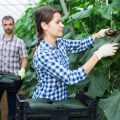Getting Started with Allotment Gardening in the UK
If you’ve ever strolled past rows of neat vegetable beds and cheerful sheds tucked away in your local neighbourhood, you’ve likely glimpsed the heartwarming tradition of allotment gardening in the UK. Allotments are more than just plots of land; they’re vibrant green havens where families, friends, and curious little hands come together to nurture both plants and community spirit. The story of British allotments stretches back to the 19th century when plots were first provided to help working families grow their own food. Over time, these spaces have blossomed into welcoming sanctuaries that celebrate sustainability, self-sufficiency, and shared wisdom.
Securing your own piece of this green paradise often starts with a visit to your local council’s website or a friendly chat with an existing plot holder. Demand can be high—so don’t be discouraged if there’s a waiting list! While you wait, why not wander through a few sites? You’ll likely meet seasoned gardeners eager to share stories and tips over the fence. Each allotment site has its own customs: from annual plant swaps to communal bonfires, joining an allotment is as much about becoming part of a caring community as it is about growing carrots and beans.
Understanding the unique etiquette is key—respect for neighbouring plots, composting rules, and pitching in with communal tasks all help keep the atmosphere harmonious. Children are always welcome, encouraged to dig for worms and marvel at sunflowers taller than themselves. Stepping onto your plot, you become part of a living tradition: one that roots families in nature, fosters friendships across generations, and inspires new growers each season.
2. Principles and Benefits of Organic Gardening
Organic gardening on British allotments is rooted in a set of core values that nurture both plants and people. At the heart of these principles is the belief that healthy soil leads to healthy crops—and, ultimately, healthier communities. Rather than relying on synthetic chemicals or quick fixes, organic gardeners cherish time-honoured practices that enrich the earth for generations to come. Let’s explore how soil health, biodiversity, and eco-friendly methods form the backbone of organic allotment gardening across the UK.
Soil Health: The Foundation of Abundance
In British allotment culture, tending to the soil is a cherished tradition passed down through families and friends. Organic practices focus on feeding the soil rather than just feeding the plants. This means using compost, well-rotted manure, green manures, and mulches to naturally boost fertility and structure. Healthy soils teem with life—from worms to beneficial microbes—creating a thriving underground community that supports strong roots and resilient crops.
| Organic Soil Practices | Benefits |
|---|---|
| Composting kitchen & garden waste | Reduces landfill, enriches soil nutrients |
| Crop rotation | Prevents soil depletion and pest build-up |
| No-dig methods | Preserves soil structure, encourages wildlife |
| Mulching | Retains moisture, suppresses weeds naturally |
Biodiversity: Welcoming Nature’s Helpers
Biodiversity is celebrated in UK allotments as an invitation to birds, bees, ladybirds, and hedgehogs—all essential allies in organic gardening. Planting a variety of fruits, vegetables, herbs, and flowers not only provides a colourful patchwork but also creates habitats for beneficial insects and pollinators. Many plot holders grow native wildflowers or install bug hotels to encourage these helpful guests.
Eco-Friendly Practices: Respecting Our Shared Environment
The ethos of “leave no trace” guides many British allotmenteers. Water conservation through rain barrels, peat-free composts, and natural pest control (like netting or companion planting) are all favoured choices. By minimising chemical inputs and prioritising sustainable techniques, organic gardeners help preserve local waterways and wildlife—nurturing a green legacy for children to discover season after season.
The Joys Beyond the Plot
Practising organic gardening isn’t just about what grows above ground—it’s about cultivating patience, wonder, and connection within families and communities. Tending an allotment with children can spark lifelong curiosity as they watch seeds transform into supper or spot a robin among the beans. In this way, the true harvest is not only what we take home in baskets but also what we sow in hearts—a deep respect for nature’s gentle rhythms and a shared sense of stewardship for our little corner of Britain.

3. Planning Your Plot and Crop Rotations
When it comes to organic allotment gardening in the UK, thoughtful planning is like setting the foundations for your family’s home—every choice matters for a thriving, sustainable patch. Start with a sketch of your plot, considering sunlight, access paths, and the natural flow of water. Embrace the age-old wisdom of crop rotation: by dividing your space into sections and moving crops each year—roots, brassicas, legumes, and fruiting vegetables—you help prevent soil-borne diseases and keep the ground full of life. This practice echoes generations of British growers who cherished their plots as living legacies.
Companion Planting: Let Nature Lend a Hand
Imagine your garden as a lively community where neighbours look out for each other! Companion planting harnesses these plant partnerships: classic British combos like carrots with onions (to deter carrot fly) or marigolds among tomatoes (for pest control) show how nature’s teamwork can reduce the need for artificial inputs. Children love spotting these “plant friends,” making gardening both educational and magical.
All-Season Productivity: Growing Beyond Summer
Innovation meets tradition when you plan for productivity year-round. Consider cold frames or cloches to extend harvests into autumn and winter—a practice favoured by keen UK gardeners. Sow hardy greens like kale, chard, or purple sprouting broccoli in late summer to keep your plot producing through the colder months. By weaving together wisdom from the past and new organic techniques, your allotment becomes a place of learning, sharing, and bounty across the seasons.
A Family-Friendly Approach
Involving children in planning encourages curiosity and care for nature. Let them help map out where sunflowers will stand tall or which corners will host bee-friendly herbs. Planning isn’t just about efficiency—it’s about nurturing connection with the earth and each other, inspired by both time-honoured traditions and fresh ideas from Britain’s vibrant gardening community.
4. Nurturing Soil and Making Your Own Compost
If you want your allotment to burst with flavourful British fruit and veg, it all begins beneath your boots—with rich, living soil. Embracing organic methods means nourishing the ground naturally, just as nature intended. Whether you’re digging up spuds or sowing runner beans with the kids, here are practical tips for building healthy soil and crafting your own compost that’ll have your plot thriving through every season.
Homemade Compost: Turning Waste into Gold
Making compost is a family-friendly way to recycle kitchen scraps and garden clippings. A classic British compost heap is a patchwork of peelings, grass cuttings, shredded paper, and autumn leaves—all working together to feed the earth. Encourage little ones to help collect these materials; it’s a hands-on science lesson in your back garden! For best results, keep your compost moist (but not soggy), turn it regularly, and balance “greens” (nitrogen-rich items) with “browns” (carbon-rich materials).
| Material Type | Examples | Benefits for Compost |
|---|---|---|
| Greens (Nitrogen) | Vegetable peels, grass cuttings, tea bags | Speeds up decomposition, feeds microbes |
| Browns (Carbon) | Dry leaves, cardboard, egg boxes | Adds structure and aeration |
| Activators | Comfrey leaves, nettles, manure | Kicks off the composting process |
The Magic of Green Manures
Green manures—like field beans, clover or phacelia—are quick-growing plants sown specifically to cover bare soil between crops. They fix nitrogen, suppress weeds, and prevent soil erosion during rainy UK winters. Come springtime, simply chop them down and dig them in to enrich your beds. It’s an easy way for families to give back to the land while learning about natural cycles.
Balanced Feeding: Nature’s Way to Healthy Crops
Organic gardening is about feeding the soil so it can feed your plants. Avoid synthetic fertilisers; instead, use homemade comfrey or nettle liquid feeds for a boost during the growing season. These traditional British remedies offer gentle but effective nutrition for tomatoes, courgettes and soft fruit. Mulching with well-rotted compost or leaf mould also keeps moisture in and weeds out—a win-win for busy parents!
Family-Friendly Tips for Thriving Soil:
- Get everyone involved: Let children sprinkle on mulch or stir the compost bin—it’s messy fun with a purpose.
- Rotate crops each year to prevent nutrient depletion and keep pests guessing.
- Add organic matter little and often; even small steps make a big difference over time.
Your allotment soil is more than just dirt—it’s a living community underfoot. With patience and care, you’ll nurture a plot that rewards your family with delicious harvests year after year.
5. Natural Pest and Disease Management
Embracing Wildlife-Friendly Solutions
Managing pests and diseases organically on your UK allotment is a rewarding way to support the natural balance of your patch while nurturing a safe environment for your family and local wildlife. Instead of reaching for chemical sprays, consider inviting helpful creatures into your garden—just as we encourage our children to make new friends at the playground! By planting native wildflowers or installing bug hotels, you’ll create havens for ladybirds, lacewings, and hoverflies, all of which feast on aphids and other troublesome pests. Hedgehogs, frogs, and birds also love to snack on slugs and snails, so providing shelter such as log piles or small ponds can be a welcome invitation.
Physical Barriers: Simple Yet Effective
Just as we teach our little ones about setting healthy boundaries, physical barriers can be a gardener’s best friend in the fight against pests. Fine mesh netting keeps cabbage white butterflies from laying eggs on brassicas, while copper tape around raised beds deters slugs without harming them. Cloches made from recycled bottles or purpose-made fleece tunnels are perfect for protecting tender seedlings from both pests and late frosts—think of them as cosy duvets for your precious plants!
Encouraging Natural Predators
Nature offers its own team of pest controllers if we simply make space for them. Attracting birds by hanging feeders or nesting boxes near your plot helps reduce caterpillar and beetle numbers. If you spot aphids clustering on beans or roses, resist the urge to squish them; instead, wait a few days and watch as ladybirds and their larvae arrive for a feast. Teaching children to recognise these helpful insects can turn pest patrol into an engaging nature hunt during family visits to the allotment.
Cultural Practices to Prevent Disease
Prevention is often better than cure when it comes to plant diseases. Rotate crops annually to avoid soil-borne pathogens building up, choose disease-resistant varieties suited to the UK climate, and maintain good airflow between plants by careful spacing. Water early in the morning at soil level rather than overhead in the evening—this helps leaves dry quickly and reduces the risk of fungal issues like mildew or blight taking hold.
By weaving these organic strategies together—fostering wildlife allies, setting up gentle defences, and practising mindful plant care—you’ll build a thriving allotment that’s both productive and harmonious with nature. These methods not only protect your harvest but also cultivate curiosity and respect for the living world in young gardeners beside you.
Harvesting, Seed Saving, and Sharing Within the Community
Harvesting Sustainably: Taking Only What You Need
One of the greatest joys in allotment gardening is seeing your hard work bear fruit—sometimes quite literally! When it comes to harvesting, taking a mindful approach ensures your plot remains productive year after year. Pick crops regularly but only take what you can use or share. By allowing some plants, like beans or courgettes, to mature fully on the vine for seed saving, you also support the health of future generations of your favourite varieties. Remember, careful harvesting helps preserve plant vigour and encourages continual cropping throughout the season.
Seed Saving: Nature’s Family Tradition
Gathering seeds from your healthiest and best-tasting crops isn’t just practical—it’s a time-honoured tradition among UK gardeners. Choose open-pollinated varieties for reliable results, and allow them to ripen fully before collecting. Dry your seeds thoroughly and store them in clearly labelled envelopes somewhere cool and dry. Involve little hands in this process; let children marvel at how a tiny pea or sunflower seed holds all the promise of next year’s bounty. This practice not only saves money but also fosters a deeper connection with the cycles of nature, right in your own plot.
The Allotment Spirit: Sharing and Community Bonds
Allotments across the UK are famous for their strong sense of community—a place where cups of tea and gardening wisdom are shared as freely as surplus rhubarb or runner beans. When you have an abundant harvest or extra seeds, pass them along to neighbours on nearby plots. Many sites have communal tables or seed swap events where sharing is encouraged. These small acts of generosity strengthen local ties and keep traditional varieties alive. Whether exchanging heritage tomatoes or swapping stories over a fence, remember that growing together is what makes allotment life truly special.
Cultivating Togetherness: Ideas for Your Local Patch
Consider organising a community harvest day or seed exchange within your allotment association. It’s a wonderful way for families to meet, learn from one another, and celebrate each season’s successes. Perhaps invite children to create seed packets decorated with their own artwork or keep a “sharing box” by the gate for any gluts of produce—each carrot or courgette placed inside is an invitation to friendship.
Harvest Wisdom from Plant Life
As plants quietly teach us patience, resilience, and generosity with every growing cycle, so too does sharing our bounty help us grow as individuals and neighbours. By embracing sustainable harvesting, mindful seed saving, and a generous spirit, we nurture not only our own plots but also the heart of our allotment communities—one shared apple or packet of seeds at a time.


